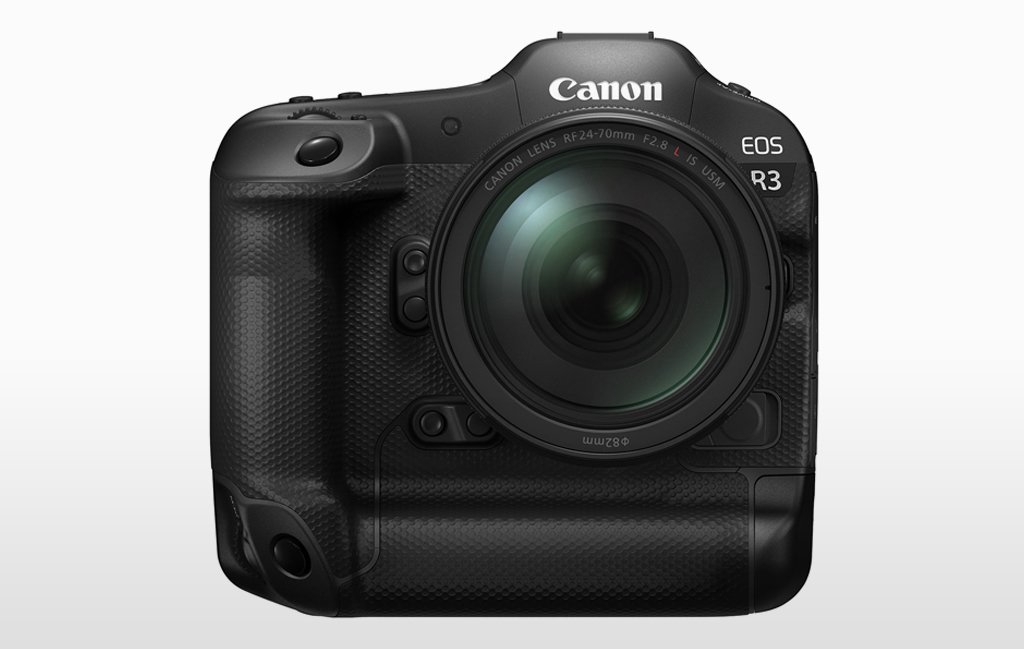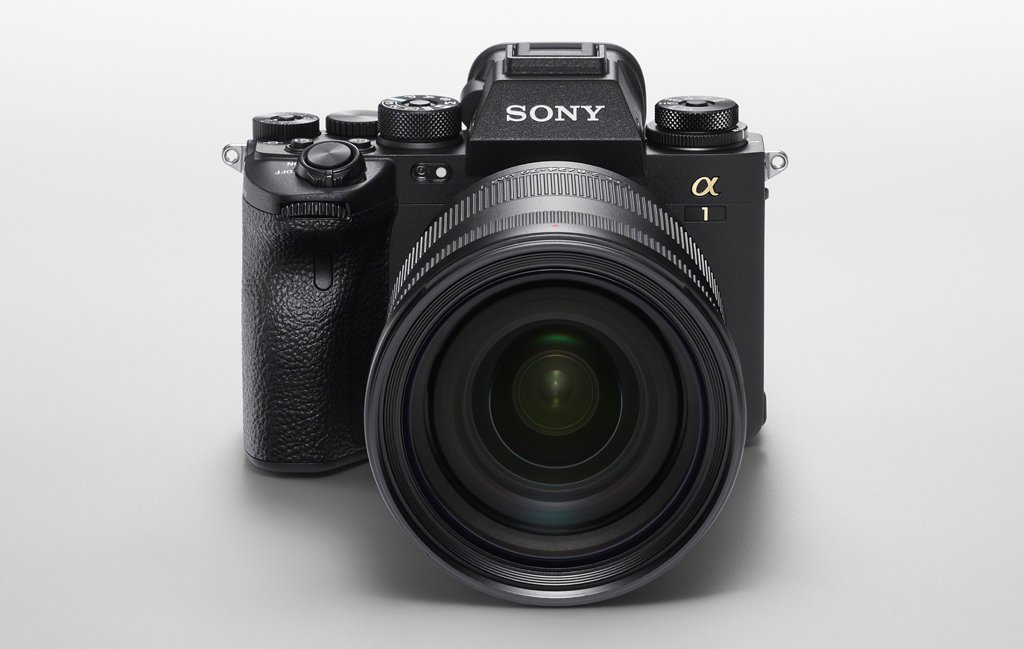Cameras For Wildlife Photography
Let's talk about cameras for wildlife photography. Along with the lens and the many lens choices to be made, the camera is the most essential and obvious piece of photography gear we'll be discussing.
When it comes to deciding which camera is best for wildlife, there are so many choices, brands, and features from which to choose. Film still has a place in certain photography genres, but for wildlife, it's not ideal. So, for that reason, we are strictly talking about digital cameras here. As a general matter, the two most important choices concerning digital cameras for wildlife are camera type and image sensor size.
The DSLR, the digital single-lens reflex camera, has been the favorite of pros for almost two decades. It has a mirror and pentaprism, meaning you see the scene through an optical viewfinder. But because of this camera design, DSLRs tend to be larger, bulkier, and heavier in size than other camera types available today. And for this reason, DSLRs are starting to fall out of favor with photographers as newer mirrorless models match and exceed their predecessor's capabilities. The mirrorless camera has no pentaprism or optical viewfinder, so it's lighter and more compact. You see your subject live through the LCD screen on the back of the camera or an electronic viewfinder in the eyepiece.
Camera manufacturers are pouring more of their financial resources into technology, new features, and lens choices for their mirrorless camera systems than DSLRs these days, so mirrorless seems to be the most logical place to start when building a camera system for wildlife if you just happen to be starting out.
Regarding the camera's image sensor, size does happen to matter. Cameras that are considered full-frame models have an imaging sensor that's about the same size as a piece of old 35mm film – 36mm x 24mm. The larger surface area produces higher quality images – less digital noise, better dynamic range - than cameras with smaller sensors. APS-C or cropped-sensor cameras have imaging sensors of 22mm x 16mm.
Some wildlife photographers prefer camera models with a smaller sensor since it produces a magnification factor – or more accurately called a "crop factor" – which gives all lenses a longer reach. For example, Nikon has a built-in 1.5x magnification factor on these models and Canon 1.6x. Therefore, a 300mm lens has a 420mm reach on a Nikon APS-C camera body and a 480mm reach on a Canon.
Other important camera features to consider with wildlife photography are burst speed, number of autofocus points, in-body image stabilization, and weather sealing.
Burst speed refers to the number of images the camera can capture per second or "frames per second." The higher this number, the better your odds will be of capturing that decisive moment during fast-paced action or animal behavior. The difference between getting the perfect wing position with a bird in flight and not getting it could be how many frames per second your camera can capture. For successful wildlife photography, 8 frames per second would be considered the minimum we would recommend.
The more autofocus points your camera offers, the less risk you have of losing focus-lock while tracking a fast-moving wildlife subject. It's also a lot more convenient when trying to focus on an animal or bird that is not in the dead-center bull's eye of the image frame.
In-body image stabilization is a relatively new camera feature that reduces blur due to camera movement during the exposure. Since wildlife photography involves using longer lenses, which are particularly prone to camera shake, this is a valuable feature to consider. If you see an African safari or Antarctica photography cruise in your future, image stabilization in the camera, the lens, or in tandem could save the day on more than just one occasion.
And lastly, it should be evident to all that wildlife photography is to be enjoyed in the outdoors where the natural elements can potentially damage your camera's sensitive electronics. Weather sealing is a feature that can protect your camera from the elements, particularly light rain, humidity, and dust. The alternative to a weather-sealed camera is putting it away during these conditions, missing shots, or camera malfunctions at inopportune times.
So to quickly recap, here are a few things to consider when it comes to the right camera for wildlife photography:
1– A DSLR or Mirrorless? Both are good options, but the mirrorless system is clearly the future.
2– Full frame or cropped sensor, APS-C? All things being equal, the full-frame sensor delivers better quality, but the APS-C offers extra reach.
3– Burst Speed. The more frames per second, the better.
4– Autofocus Points. The more AF points the camera offers, the more viewfinder coverage for focus tracking and compositional options.
5– In-body Image Stabilization. Highly recommended.
6– Adequate Weather Sealing. You're going to be outdoors in dust and moisture, so this feature is indispensable.
Now that we have a good understanding of what is expected from your camera, let's take a look at some of our recommendations for wildlife cameras. You can see those cameras below.
Canon Cameras For Wildlife Photography
Canon EOS R3 – New in 2021, the Canon EOS R3 is Canon’s current top full-frame mirrorless model, positioned between the EOS R5 and Canon’s flagship DSLR, the EOS-1D X Mark III. The EOS R3 emphasizes speed, especially advantageous for wildlife action photography, and is able to shoot up to 30 fps with its electronic shutter or 12 fps with the mechanical shutter.
Canon EOS R5 – Released in mid-2020, the Canon EOS R5 is an excellent choice for wildlife photography with generous resolution and fast continuous shooting rates. The 45-megapixel EOS R5 can capture up to 12 fps using its mechanical shutter or 20 fps with its electronic shutter.
Canon EOS-1D X Mark III – Canon’s top professional DSLR, updated in 2020 to Mark III, is arguably the best DSLR for wildlife photography, taking into account its speed and the lens options in the Canon system, including super-tele primes and teleconverters. It’s the fastest DSLR currently available, with 16 fps capture using the optical viewfinder, or up to 20 fps when shooting in Live View.
Nikon Cameras For Wildlife Photography
Nikon Z9 – The Z9, just introduced in 2021, is Nikon’s full-frame flagship for its mirrorless Z system. Featuring a Nikon-designed and -developed 45.7-megapixel stacked CMOS sensor and EXPEED 7 processor, the Nikon Z 9 can capture RAW format images at the full resolution of the camera at up to 20 fps with a buffer of 1,000 frames in a burst. For even faster shooting rates, you can opt for full-resolution JPEGs at up to 30 fps or 11-megapixel JPEGs at a blistering 120 fps with continuous AF/AE. The Z 9 also features the most advanced autofocus system yet in a Nikon camera.
Nikon Z 6II – Both the Nikon Z 6II and Z 7II—the company’s second-generation full-frame mirrorless cameras—are excellent performers for wildlife photography. Personally, I lean toward the Z 6II because of its speed. It’s lower in resolution than the Z 7II (24.5 MP versus 45.7) and it offers a faster continuous capture rate of 14 fps (10 fps for the Z 7II). Both cameras have excellent low-light AF performance, but the Z6ii is marginally better.
Nikon D6 – Nikon updated its flagship pro DSLR in 2020, and it’s among the most capable cameras for wildlife photography that they ever introduced. The D6 is faster than its predecessor, with a continuous shooting rate of 14 fps with its mechanical shutter versus the D5’s 12 fps. The D6 also offers a silent shooting mode at 10.5 fps. The resolution of the image sensor is unchanged at 20.8 megapixels. There is a new AF system that has fewer AF points (105 versus 153), but all of them are now cross-type and individually selectable.
NIKON D850 – The D850 has one of the strongest bodies and super-efficient battery life. It also offers a huge dynamic range, making it my choice as the best all purpose camera amongst all camera manufacturers.
Sony Cameras For Wildlife Photography
Sony a1 – The Sony a1, introduced in 2021, combines the best features of Sony’s Alpha cameras to date and adds some new technologies as well. Its maximum continuous shooting speeds of 30 fps exceeds Sony’s previous flagship, the Sony a9. And at 50.1 megapixels, the a1 also tops the a9’s resolution, approaching the company’s highest resolution full-frame model, the 61-megapixel a7R IV. This combination of speed and resolution alone makes it one of the very best cameras for wildlife photography.
Sony a9 II – Sony’s previous full-frame mirrorless flagship (prior to the introduction of the a1) features a 24.2-megapixel stacked CMOS sensor combined with a 693-point focal plane phase detection AF system, which covers approximately 93 percent of the frame. The camera is capable of making 60 AF/AE tracking calculations per second and able to shoot at 20 fps continuously for up to 241 RAW or 362 JPG images at the camera’s full resolution in a single burst. Also advantageous for wildlife photography is the camera’s silent shooting mode and a high-resolution Quad-VGA OLED Tru-Finder that’s one of the best EVFs we’ve used—and there’s no blackout during capture.
Sony a7 IV – The Sony a7 IV is the newest generation of the company’s entry-level full-frame mirrorless camera, introduced in 2021. Though it’s the most affordable in the full-frame Alpha series, it offers several features and technologies inherited from the line’s most advanced models. The 33-megapixel Sony a7 IV has the same BIONZ XR processor in the flagship Sony a1 and is capable of continuous shooting at up to 10 fps with autofocus and autoexposure tracking.
Other Cameras For Wildlife Photography
Fujifilm X-T4 – Introduced in 2020, the X-T4 is our top pick from Fujifilm for wildlife work. The camera can capture up to 15 fps with its mechanical shutter and 20 fps using the electronic shutter at the camera’s full resolution of 26.1 megapixels, putting it on par in terms of speed with pro bodies that cost much more. The camera’s AF system can function in low-light conditions down to -6.0 EV, another benefit for wildlife photography.
Olympus OM-D E-M1 Mark III – Updated to Mark III in 2020, the Olympus OM-D E-M1 Mark III is positioned as a co-flagship model alongside the OM-D E-M1X as the two cameras have similar performance characteristics with different form factors. The E-M1X is a larger body with a built-in vertical grip that some may prefer, while the E-M1 Mark III is decidedly more compact without compromising image quality or speed. Like the E-M1X, the E-M1 Mark III can capture full-resolution 20.4-megapixel images at 15 fps with its mechanical shutter or an incredible 60 fps with its electronic shutter and silent shooting.
Designed with professional photographers in mind, the newest OM-D system camera from Olympus is an excellent choice for wildlife photography. The OM-D E-M1X features an in-body image stabilization system capable of 7 stops of correction. It can shoot at speeds up to 18 fps with AF/AE tracking and in silent mode, or up to 60 fps with focus and exposure locked. Another feature beneficial for wildlife photography is the Olympus Pro Capture Mode, which when activated, buffers up to 35 frames continuously and, when the shutter is fully depressed, records the preceding 35 frames.
Let us move on to lenses for wildlife photography! If you are going to invest in new gear, it’s the lenses where it’s suggested you make your most important decision. But with the price of good quality glass, what lens do you choose?
We are going to endeavor to demystify that decision for you. By going through the lens blog post you will walk away with more confidence that you are ready to make the right choice for your photography and your budget.














